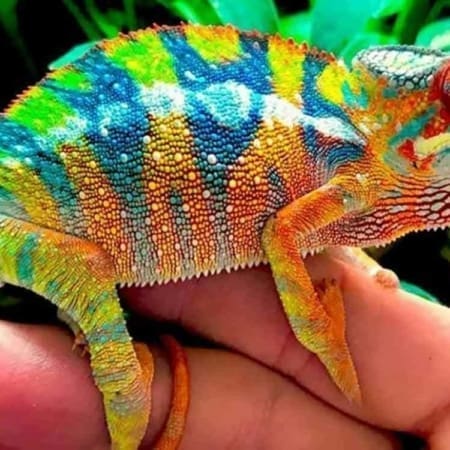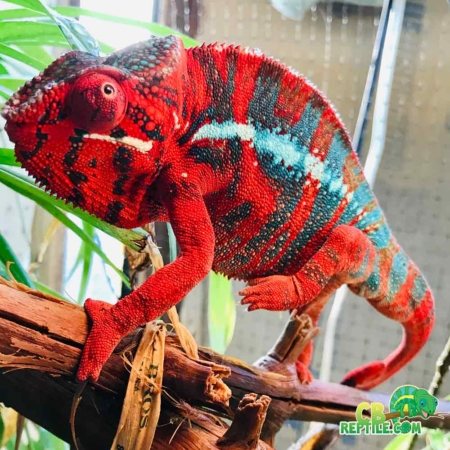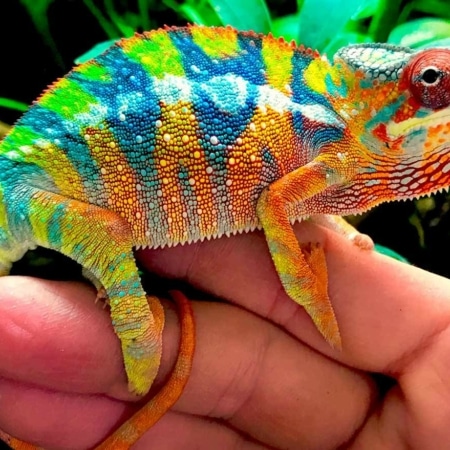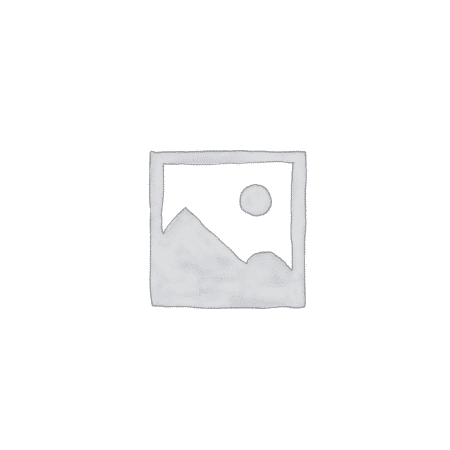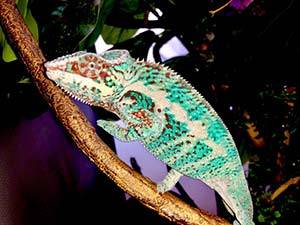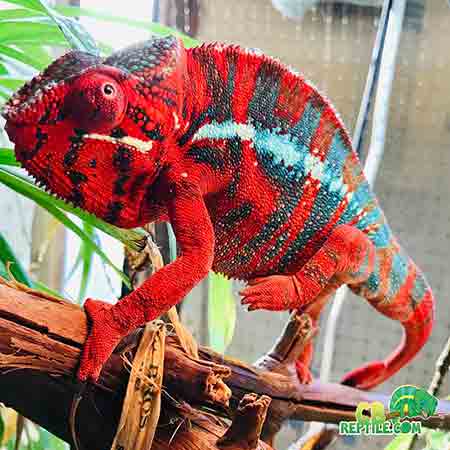Raising Baby Ambilobe Panther Chameleons
Ambilobe panther chameleons are among the most colorful reptiles on the planet, famous for their red bar and blue bar lines, bright background colors, and diverse genetic expression. Raising a baby Ambilobe panther chameleon from hatchling to juvenile is one of the most rewarding experiences in the reptile hobby—but it also requires precise husbandry, consistent hydration cycles, and careful nutritional planning. Each step in the early growth process influences how your Ambilobe develops, displays color, sheds, and thrives long-term. This guide walks through everything you need to know to raise a strong, healthy Ambilobe starting from day one.
When you begin with a captive-bred baby from a reputable facility such as the best panther chameleon breeder, your chances of success increase dramatically. Healthy genetics, proper early hydration, clean housing, and correct incubation all contribute to a baby Ambilobe that grows faster, sheds cleanly, fires brighter colors, and transitions more easily into its permanent enclosure. Raising a baby Ambilobe is both an art and a science—this page covers the proven techniques used by top keepers and breeders to ensure optimal early development.
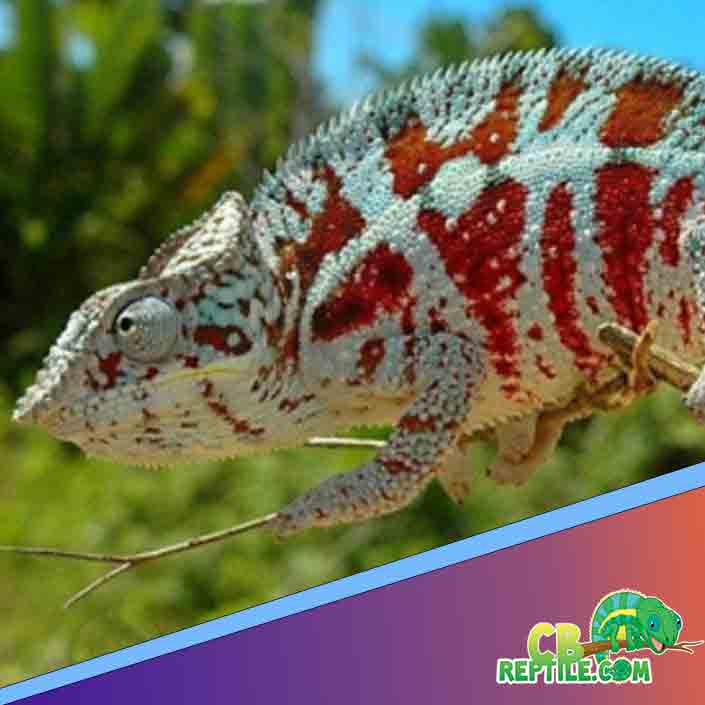
Understanding Baby Ambilobe Growth Stages
Ambilobe panther chameleons go through several important developmental stages during their first year of life. Each stage requires slight changes in enclosure size, feeding frequency, hydration patterns, and lighting intensity. Recognizing these stages ensures your baby Ambilobe receives the perfect care at the perfect time.
Stage 1 — Hatchling (0–2 months)
Freshly hatched Ambilobes are tiny, delicate, and highly dependent on proper hydration and micro-prey. During this stage, their bodies are rapidly building bone density, muscle tissue, and organ strength. They are extremely active hunters and will consume multiple small meals per day. Hydration plays a massive role in their early survival, as their small bodies lose moisture quickly.
Stage 2 — Early Juvenile (2–4 months)
During this stage, you may begin to see faint hints of the Ambilobe’s eventual color palette—greens, yellows, and early bar outlines. Growth accelerates significantly, and babies begin exploring vertical space more confidently. This is the period where proper UVB exposure and calcium supplementation strongly influence bone structure and growth patterns.
Stage 3 — Mid Juvenile (4–8 months)
Most baby Ambilobe males begin showing early color “bursts,” with reds and blues starting to appear more boldly. Females remain more muted but develop their beautiful peach and tan tones. Appetite remains high, and hydration continues to drive healthy shedding cycles. This is when you will begin to see the distinct red bar or blue bar genetic direction your Ambilobe will take.
Stage 4 — Subadult (8–12 months)
By this stage, the young Ambilobe looks dramatically different from its hatchling appearance. Bars become defined, background colors brighten, and males begin to show impressive displays. Proper hydration and UVB continue to influence their growth and final coloration.
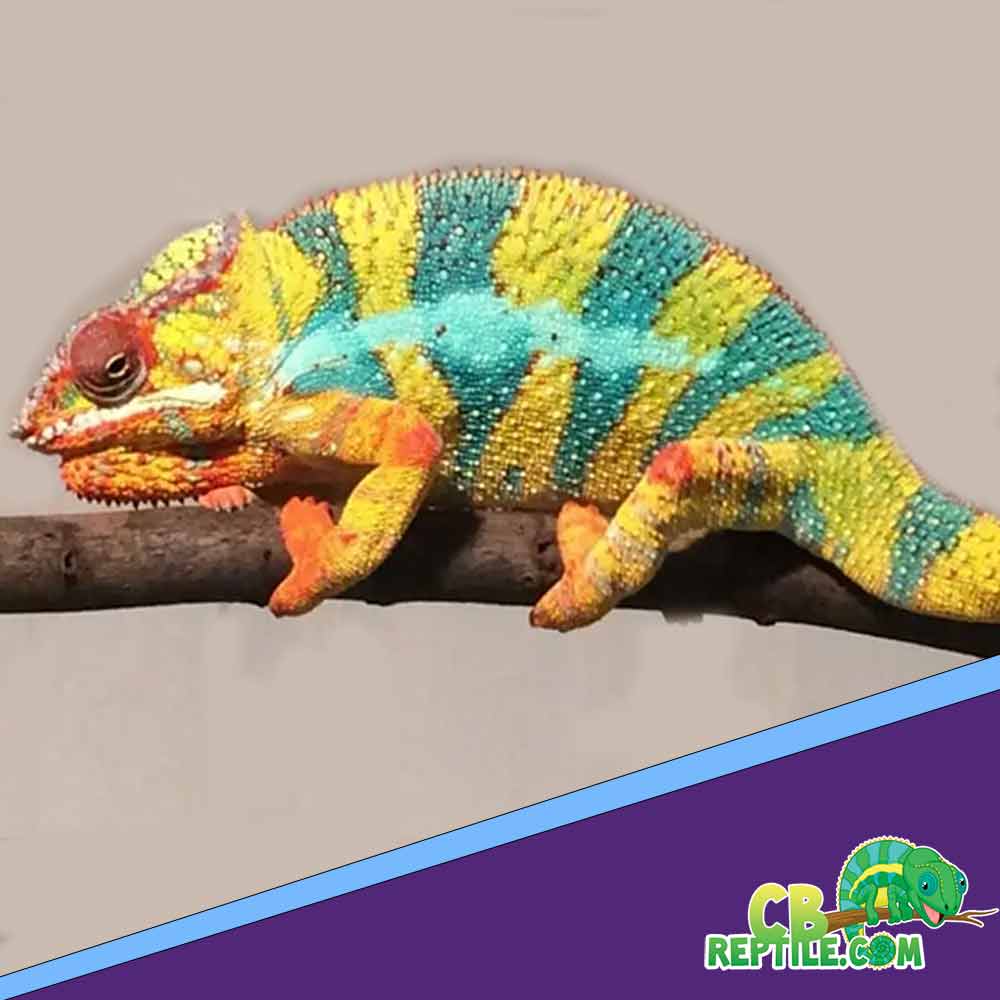
Enclosure Setup for Baby Ambilobes
One of the biggest mistakes beginners make is placing a tiny Ambilobe baby into a full-sized adult enclosure too early. Baby panther chameleons require smaller, safer environments so they can find food easily and stay properly hydrated.
Recommended Enclosure Sizes by Age
- 0–3 months: 16x16x20 inch screen or hybrid cage
- 3–6 months: 18x18x24 inch enclosure
- 6–12 months: 24x24x48 inch juvenile/adult cage
A small enclosure with ample foliage helps babies feel secure and reduces stress. Babies rely heavily on foliage for security and hydration—water droplets collect on leaves after misting, which babies drink frequently.
Essential Enclosure Elements
- Fine horizontal branches for tiny climbing feet
- Dense plant cover for hiding and hydration
- Live plants such as pothos and schefflera
- Proper drainage to prevent standing water
- Bright LED plant lighting for plant health
Lighting & UVB Requirements for Baby Ambilobes
UVB is critical for early bone development. Babies use UVB exposure to synthesize vitamin D3, which allows them to absorb calcium properly. Without the correct type and intensity of UVB, baby Ambilobes risk developing metabolic bone disease (MBD), a life-threatening condition that causes limb deformities and weakness.
Best UVB Options for Baby Ambilobes
- T5 HO 5.0 UVB (or Arcadia 6%) mounted above the screen
- UVB spanning at least half the enclosure width
- UV index between 2.0 and 3.0 at the basking zone
Baby Ambilobes do not bask as intensely as adults, so temperatures should never exceed 84–87°F at the hottest perch.

Hydration for Baby Ambilobe Panther Chameleons
Baby panther chameleons dehydrate far faster than adults, making hydration the single most important part of baby care. Babies require frequent misting or automated hydration systems to ensure droplets coat leaves throughout the day.
Hydration Schedule for Baby Ambilobes
- Morning misting: 2–3 minutes
- Midday misting: 20–30 seconds
- Evening misting: 2–3 minutes
- Night fogging: Optional but beneficial
Babies drink constantly, often multiple times per day. If you observe sunken eyes, weak grip strength, or wrinkled skin, increase hydration immediately.
Feeding Baby Ambilobes
Ambilobe panther chameleon babies are incredibly active hunters with fast metabolisms. They require multiple small meals per day, and proper gut-loading of feeders is essential for strong growth.
Best Feeder Insects for Baby Ambilobes
- Fruit flies (Hydei & Melanogaster)
- Pinhead crickets
- Extra small dubia roaches
- Black soldier fly larvae
- Small silkworms
All feeders should be gut-loaded with leafy greens, sweet potato, squash, and high-quality calcium-boosted diets.
Feeding Frequency
- 0–3 months: 2–3 times daily
- 3–6 months: 1–2 times daily
- 6–12 months: 1 time daily
Babies should have as much food as they will eat in a short period. Overfeeding is rarely an issue in the first three months.
Shedding in Baby Ambilobes
Baby Ambilobes shed frequently—sometimes weekly—because of how fast they grow. Hydration is the key to preventing stuck shed, which can restrict growth around the toes and tail if left untreated.
Handling Baby Ambilobes
Babies are delicate and should not be handled frequently. Stress can slow growth and weaken the immune system. Allow babies time to grow confidence by watching you from inside their enclosure. As they mature, gentle hand-feeding can help build trust.
Choosing a Baby Ambilobe Panther Chameleon
When browsing a chameleon for sale selection, look for:
- Strong grip strength
- Bright eyes and alert behavior
- Quick feeding response
- Clear early color potential
- Healthy, plump casque and body structure
If you want the most predictable color outcome, parent photos are essential. Reputable breeders will show both the sire and dam so you can see whether the line produces red bar, blue bar, rainbow, or high yellow offspring. This is especially important if you are deciding where to buy chameleon that will grow into a specific look.
Long-Term Success With Ambilobe Babies
With consistent hydration, strong UVB, proper feeding, and dense foliage, baby Ambilobes grow quickly and reliably. Their colors begin to explode at 4–6 months, and by the time they reach the subadult stage, they are already showing the stunning hues the Ambilobe locale is famous for. Investing in a high-quality, captive-bred Ambilobe gives you a far better chance of raising a healthy, vibrant adult that displays dramatic red and blue bar coloration.

